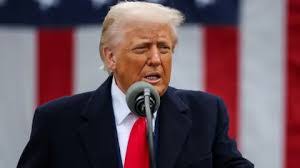In a bold move to overhaul U.S. trade relations, President Donald Trump announced a comprehensive set of tariffs on April 2, 2025, marking the day as “Liberation Day.” The new tariffs aim to address longstanding trade imbalances and promote domestic manufacturing.
Key Components of the Tariff Strategy:
- 10% Baseline Tariff: Effective April 5, 2025, a 10% tariff will be applied to all imports, serving as a standard rate to counteract foreign trade barriers and encourage domestic production.
- Reciprocal Tariffs: Starting April 9, 2025, higher tariffs will target countries with significant trade surpluses with the U.S. These rates are set at approximately half of the tariffs those countries impose on U.S. goods. Notable rates include:
- China: 34%
- European Union: 20%
- Japan: 24%
- India: 26%
- Automobile Tariffs: A 25% tariff on all foreign-made automobiles and parts will be enforced starting April 3, 2025, aiming to revitalize the U.S. automotive industry.
Impact on Ethiopia:
Ethiopia, along with other nations, is affected by the 10% baseline tariff. While this rate is relatively modest, it signifies a shift in U.S. trade policy that could influence future economic relations. Ethiopia’s recent accession to the BRICS group may also play a role in shaping its trade dynamics with the U.S.


No Comment Found.